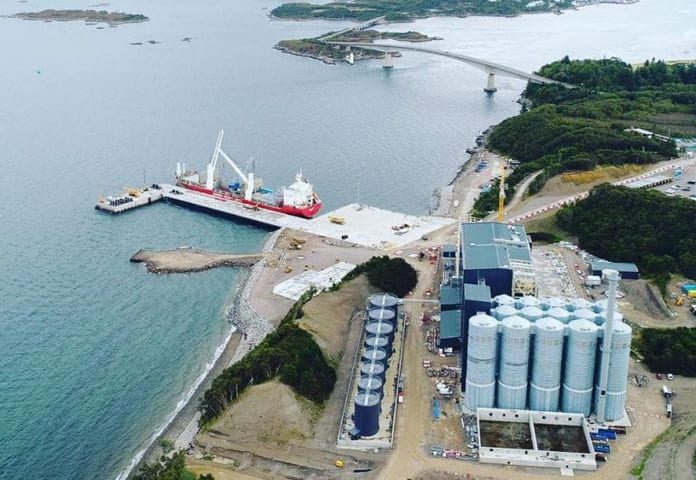Price weakening after this summer’s price peak.
Forget fishmeal. In the case of market leader Mowi, one can also partially disregard soy. The most important single ingredient in the company’s fish feed is wheat. Wheat fills the grain silos at Mowi Fish Feeds’ two factories in Bjugn, Norway, and Kyleakin, Scotland.
Wheat escapes controversial discussions about fish-in-fish-out ratios and deforestation in the Amazon. Wheat, largely produced in vast fields in the American Midwest, is sustainable, healthy – and the fish like it.
17.1 percent of Mowi’s salmon feed is wheat.

Food inflation
But wheat has not escaped the product problem that has hit substitutes such as corn, soy and rapeseed inflation. Rapidly rising prices.
This summer we have seen the highest wheat prices since 2014.
In the last 30 years, we have only seen four price peaks that have surpassed what we have experienced this summer. The price jump has come as a function of bottlenecks on the supply side coupled with the escalation of the economy and thus the demand in the time after the corona. Raw materials for a wide range of foods have risen sharply in price.

More expensive
And it is not just in the food segment that this phenomenon has arisen. We see the same in aluminum, fertilizer, iron ore, steel, gold, coal, natural gas, sugar, timber and cotton.
It is also not just the underlying raw materials that have become more expensive. It has also become more expensive to transport them. The price of containers and freight rates for dry bulk has skyrocketed.
And when the underlying raw materials become more expensive, feed, for fish and animals, also becomes more expensive. This in turn will put price pressure on the fresh food counter – for finished products of salmon, pork, beef and chicken.
Doubling
The salmon feed has fluctuated around NOK 12 (EUR 1.1) per kilo for the past two years. It is close to doubling since the levels back in 2008.

However, after a burning hot period with galloping commodity prices, there has been a cooling in recent weeks. Soy, wheat, corn, rapeseed have all weakened significantly in price. Customers say “no thanks”.

Whether this is a lasting weakening and fall to a new and lower price level is of course too early to conclude. But it is worth mentioning that other important raw materials, such as timber, oil and iron ore, have also fallen in price recently.

